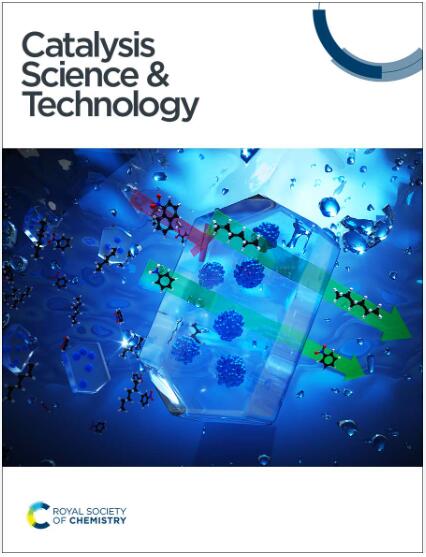具有可调暴露的木基碳支撑钯纳米颗粒,用于促进炔醇的半加氢反应†。
IF 4.4
3区 化学
Q2 CHEMISTRY, PHYSICAL
引用次数: 0
摘要
本文章由计算机程序翻译,如有差异,请以英文原文为准。

Monolithic wood-based carbon supported Pd nanoparticles with tunable exposure for boosting semi-hydrogenation of alkynols†
The selective hydrogenation of alkynols to enols catalyzed by carbon-supported Pd catalysts is a highly attractive reaction for the production of fine chemicals. However, the limited dispersion and stability of Pd species on the carbon support often hindered their catalytic activity. In this study, we developed a “carbon-layer anchored” method to synthesize Pd@NMC monolithic catalysts with tunable Pd exposure by the coating of nitrogen-containing polymer on the wood framework, followed by Pd loading, and carbonization procedures. The exposure of Pd nanoparticles can be controlled through a partial oxidation strategy. As a result, the semi-embedded Pd catalyst (Pd@NMC-250) exhibited superior activity and selectivity (91%) in the semi-hydrogenation of 2-methyl-3-butyn-2-ol (MBY). The reaction rate can reach 5110 mol molPd−1 h−1, which is 4.5-fold higher than that of the commercial Lindlar catalyst under identical conditions (308 K, 5 bar H2). Moreover, the monolithic catalyst presented good stability for enduring five cycles. The nitrogen species in the support and the carbon layer deposited on Pd nanoparticles during pyrolysis synergistically promote the Pd anchoring. After mild oxidation, the carbon layer is partially removed to form a semi-embedded Pd@C nanostructure, with the surface exposed and the bottom embedded on the carbon support, which enhances the stability. Furthermore, the monolithic wood-based carbon catalysts are easy to separate from the solution and thus have the potential for operating a variety of liquid-phase catalytic reactions beyond hydrogenation.
求助全文
通过发布文献求助,成功后即可免费获取论文全文。
去求助
来源期刊

Catalysis Science & Technology
CHEMISTRY, PHYSICAL-
CiteScore
8.70
自引率
6.00%
发文量
587
审稿时长
1.5 months
期刊介绍:
A multidisciplinary journal focusing on cutting edge research across all fundamental science and technological aspects of catalysis.
Editor-in-chief: Bert Weckhuysen
Impact factor: 5.0
Time to first decision (peer reviewed only): 31 days
 求助内容:
求助内容: 应助结果提醒方式:
应助结果提醒方式:


